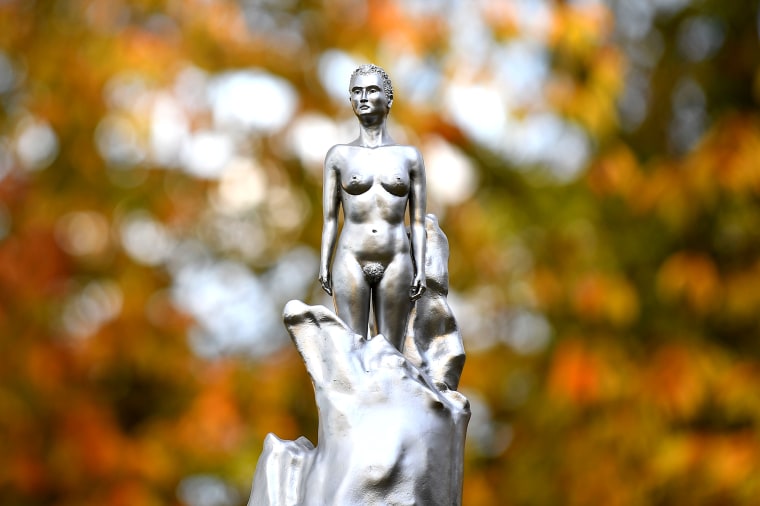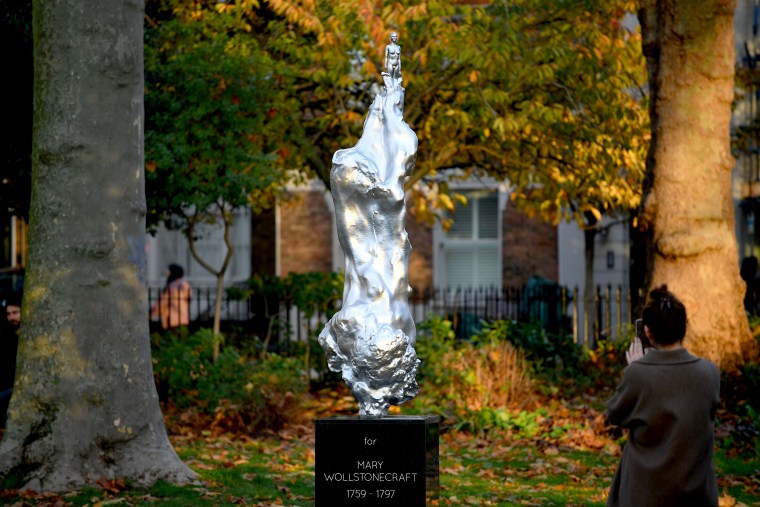A statue of a nude woman unveiled in London to honor feminist Mary Wollstonecraft has prompted criticism from some social media users.
The statue was unveiled Tuesday on Newington Green in the northern part of the city and shows a silvery naked woman on top of a swirling mingle of female forms. It was created by British artist Maggi Hambling after a 10-year campaign.
Many prominent feminists and activists took to Twitter to express their dissatisfaction with the sculpture.

Activist Elaine Crory tweeted that a statue should have depicted a figure of Wollstonecraft.
"Not a naked 'everywoman' who just so happens to have super perky breasts etc. Sick of this," she posted.
Feminist writer Mona Eltahawy tweeted: "Again: nudity is not the issue. What is being conveyed and for whose gaze is. Why, after years of so few statues of women, is the naked female form of statues being erected for & about women?"
"Genuine question: Why present Mary Wollstonecraft as naked? I’ve seen many statues of male writers, rights activists and philosophers and I can’t remember any of them being bare-a**ed," said British writer Malorie Blackman in a tweet.
Blackman added: "As a study of fluid female forms it's interesting and if it is just that and dedicated to her, then fair enough. ... It’s an interesting piece though and has done what good art should do, it has got people discussing it."
A spokesperson for Hambling said the statue is of a naked figure and not of a nude Wollstonecraft.
Others praised the figurine, with historian Dr. Fern Riddell posting several tweets explaining why she likes it.
"I love it because to me it’s a massive combination of themes, I love the water like a raging wave, I like the mechanical aspect of the figure, it reminds me of how women are created in images that never match their thoughts," she wrote.
Hambling said in a video that she created the sculpture to "celebrate the life force" Wollstonecraft was and her "battle for freedom."
"My sculpture involves this tower of intermingling female forms culminating in the figure of the woman at the top, who is challenging and ready to challenge the world," she said.
Wollstonecraft, born in 1759, fought for the equal rights of women and pushed for female representation in Parliament a century before the suffragettes, according to her biography. Known as "the mother of feminism," she wrote extensively about the importance of education and opened a girls' boarding school in Newington Green London when she was 25.
"She has had a critical influence on our lives today: any woman who has the vote, and can read and write, has Mary Wollstonecraft to thank," her biography reads.
Wollstonecraft died in September 1797 from pregnancy complications.
